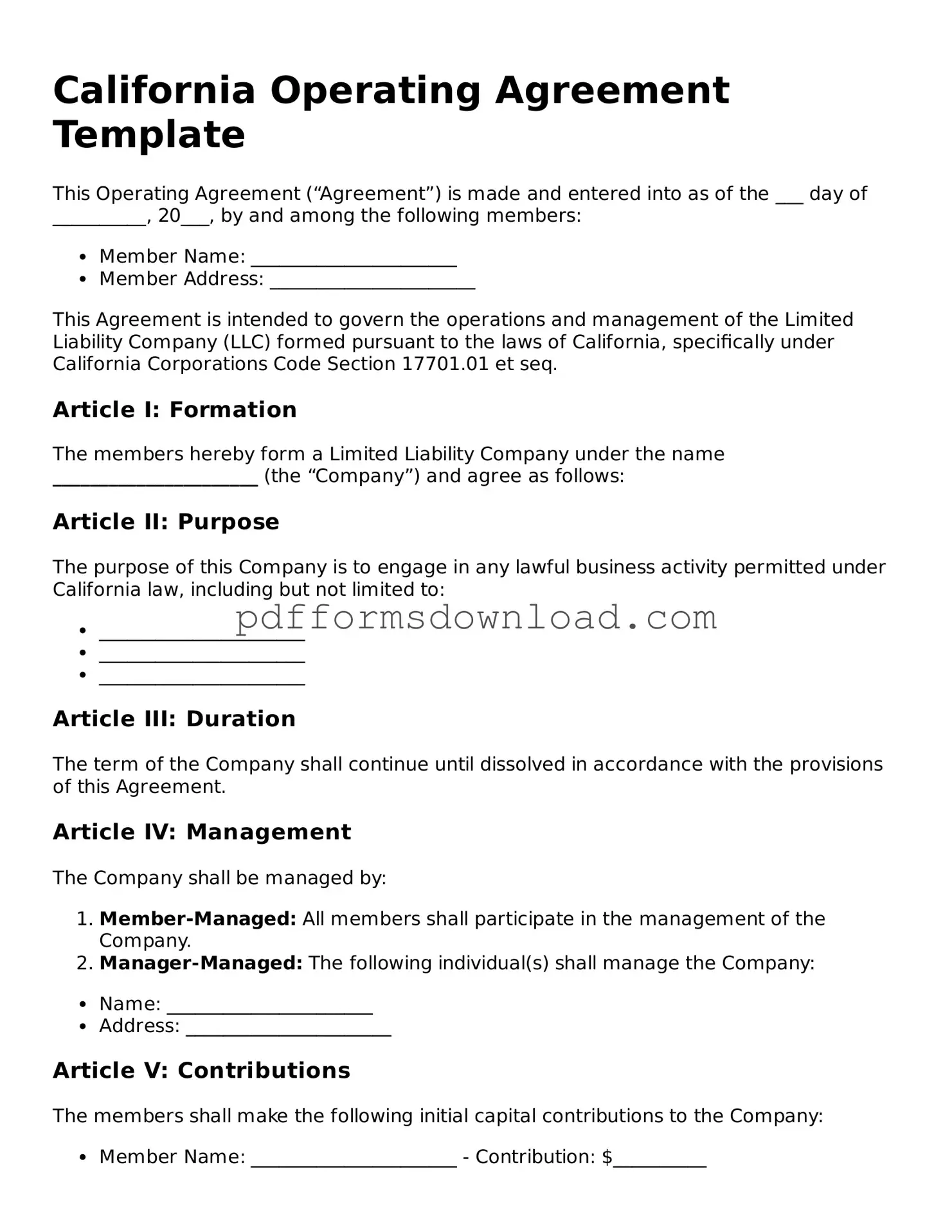What is a California Operating Agreement?
A California Operating Agreement is a legal document that outlines the management structure and operating procedures of a limited liability company (LLC) in California. This agreement serves as an internal guideline for the members of the LLC, detailing how decisions are made, how profits and losses are distributed, and the roles and responsibilities of each member. While California does not legally require LLCs to have an Operating Agreement, having one is highly recommended as it helps prevent misunderstandings and disputes among members.
Why is an Operating Agreement important for an LLC?
The importance of an Operating Agreement cannot be overstated. It provides clarity and structure to the operation of the LLC, which is particularly beneficial in situations where disputes arise. By clearly defining the rights and obligations of each member, the agreement helps to ensure that everyone is on the same page. Additionally, having a well-drafted Operating Agreement can enhance the credibility of the LLC in the eyes of banks, investors, and potential business partners. It can also protect the members' personal assets from liabilities incurred by the LLC.
What should be included in a California Operating Agreement?
A comprehensive California Operating Agreement typically includes several key components. First, it should outline the name of the LLC and its principal place of business. Next, it should detail the purpose of the LLC and the duration of its existence. The agreement should also specify the roles and responsibilities of each member, including how decisions will be made—whether by majority vote or unanimous consent. Additionally, it should address how profits and losses will be allocated among members, the process for adding or removing members, and the procedures for dissolving the LLC if necessary. Lastly, it is advisable to include provisions for dispute resolution to manage conflicts effectively.
How can I create a California Operating Agreement?
Creating a California Operating Agreement can be done in several ways. One option is to draft the agreement from scratch, ensuring that all necessary components are included. This requires a good understanding of the legal requirements and best practices for LLCs. Alternatively, many businesses choose to use templates available online, which can provide a helpful starting point. However, it is essential to customize any template to fit the specific needs of the LLC. Consulting with a legal professional is also a wise choice, as they can provide tailored advice and ensure that the agreement complies with California law.
